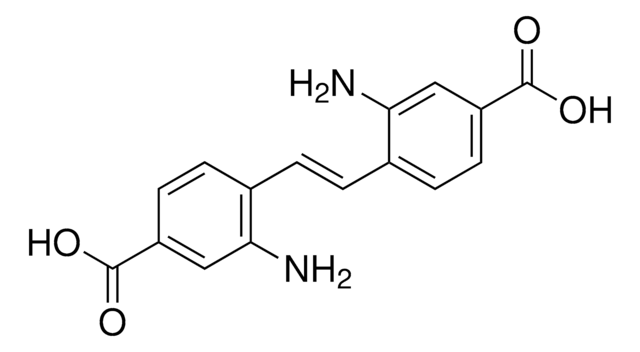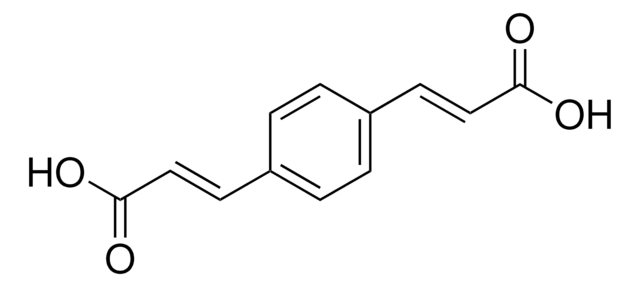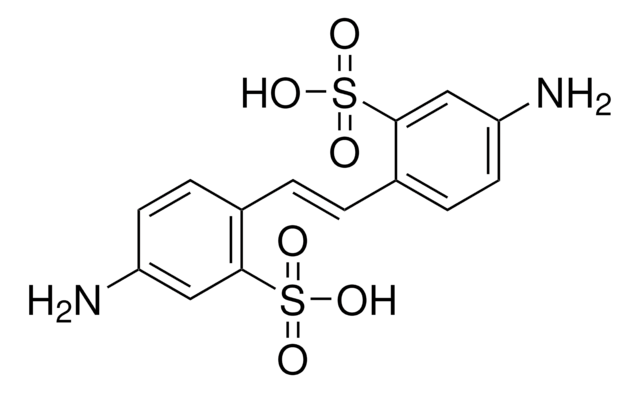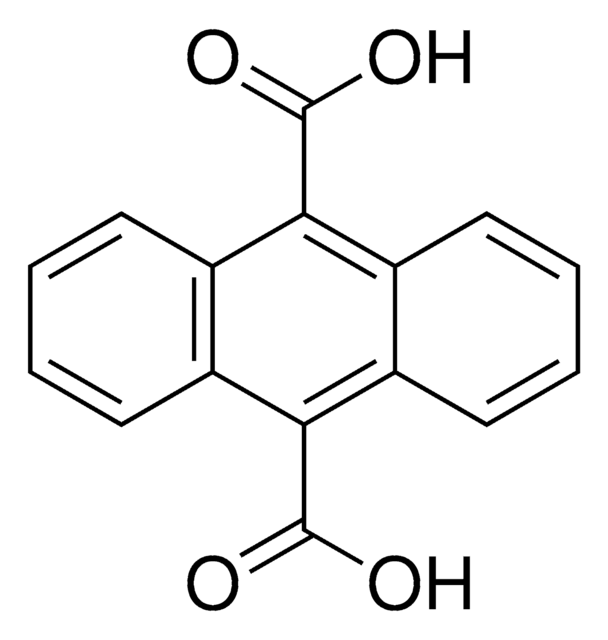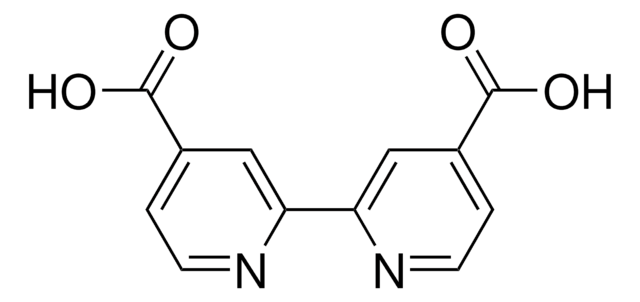Key Documents
759597
4,4′-Stilbenedicarboxylic acid
98%
Synonim(y):
4,4′-(1,2-Ethenediyl)bisbenzoic acid, 4,4′-Dicarboxystilbene, Biphenylethene-4,4·-dicarboxylic acid, H2BPEA, H2SDC
About This Item
Polecane produkty
Próba
98%
Postać
powder
charakterystyka ekologicznej alternatywy
Design for Energy Efficiency
Learn more about the Principles of Green Chemistry.
sustainability
Greener Alternative Product
mp
400-420 °C
kategoria ekologicznej alternatywy
, Enabling
ciąg SMILES
OC(=O)c1ccc(\C=C\c2ccc(cc2)C(O)=O)cc1
InChI
1S/C16H12O4/c17-15(18)13-7-3-11(4-8-13)1-2-12-5-9-14(10-6-12)16(19)20/h1-10H,(H,17,18)(H,19,20)/b2-1+
Klucz InChI
SBBQDUFLZGOASY-OWOJBTEDSA-N
Powiązane kategorie
Opis ogólny
Zastosowanie
Hasło ostrzegawcze
Warning
Zwroty wskazujące rodzaj zagrożenia
Zwroty wskazujące środki ostrożności
Klasyfikacja zagrożeń
Acute Tox. 4 Oral - Eye Irrit. 2 - Skin Irrit. 2 - STOT SE 3
Organy docelowe
Respiratory system
Kod klasy składowania
11 - Combustible Solids
Klasa zagrożenia wodnego (WGK)
WGK 3
Temperatura zapłonu (°F)
Not applicable
Temperatura zapłonu (°C)
Not applicable
Wybierz jedną z najnowszych wersji:
Certyfikaty analizy (CoA)
Nie widzisz odpowiedniej wersji?
Jeśli potrzebujesz konkretnej wersji, możesz wyszukać konkretny certyfikat według numeru partii lub serii.
Masz już ten produkt?
Dokumenty związane z niedawno zakupionymi produktami zostały zamieszczone w Bibliotece dokumentów.
Klienci oglądali również te produkty
Nasz zespół naukowców ma doświadczenie we wszystkich obszarach badań, w tym w naukach przyrodniczych, materiałoznawstwie, syntezie chemicznej, chromatografii, analityce i wielu innych dziedzinach.
Skontaktuj się z zespołem ds. pomocy technicznej
